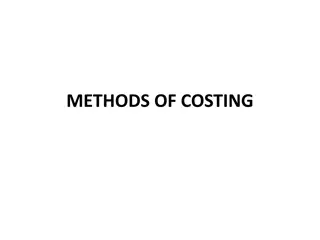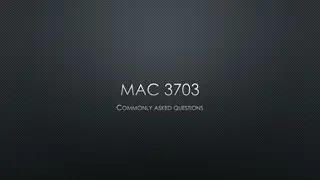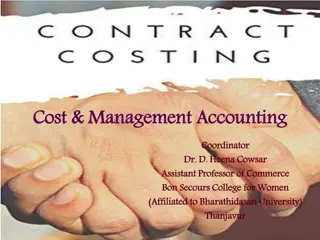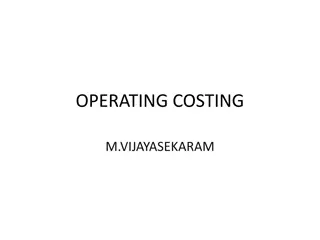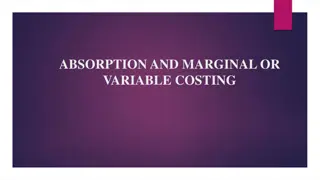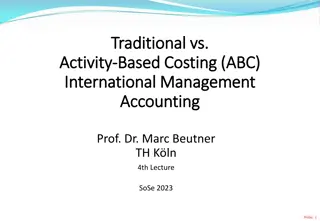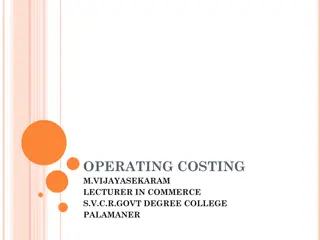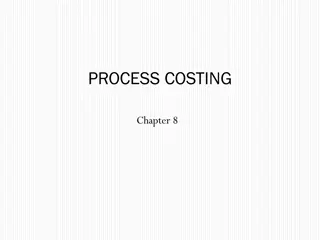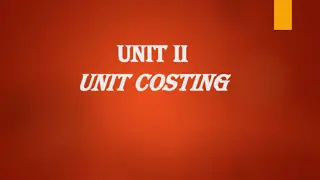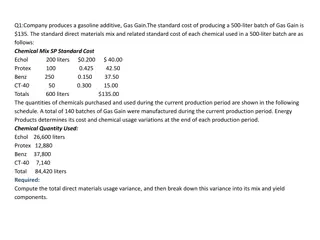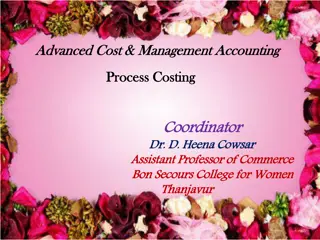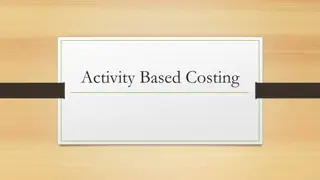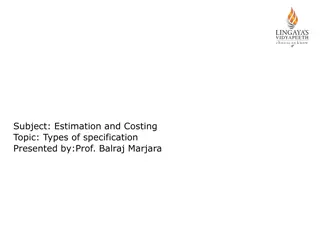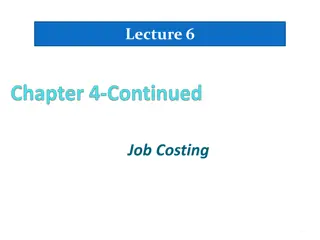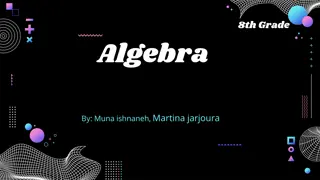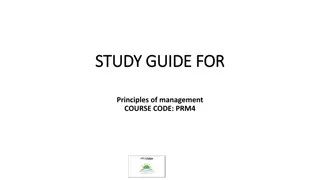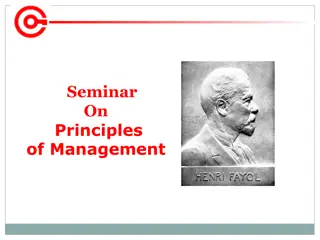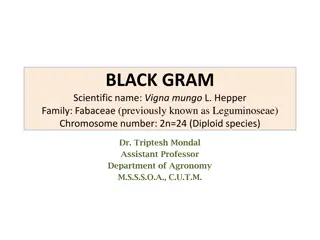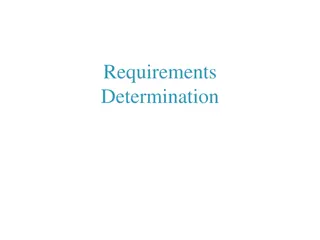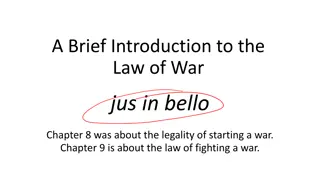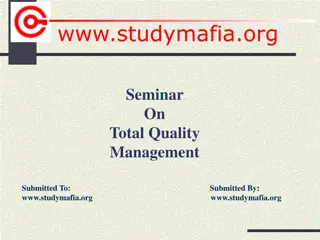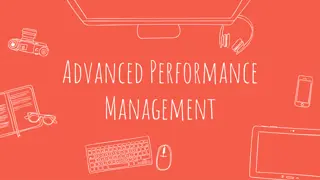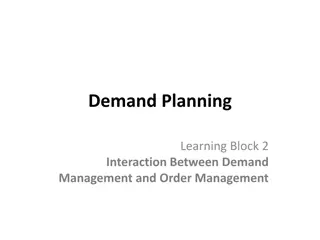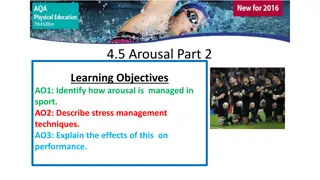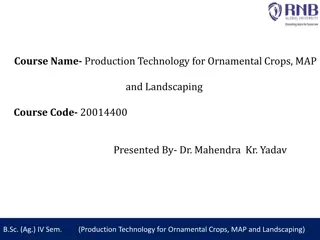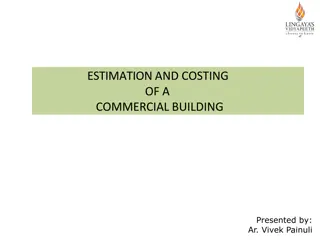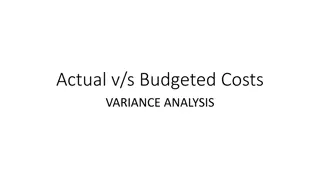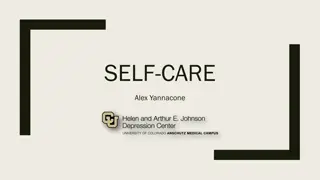Costing Techniques in Management Principles by Martina Dal Molin
Explore the different costing techniques such as Job Order Costing, Process Costing, and Operation Costing, as outlined by Martina Dal Molin for the Management Principles course. The Job Order Costing method focuses on allocating costs based on individual jobs or batches of products, emphasizing direct labor and direct material costs. Learn about the features, identification, and allocation of costs through practical examples in this comprehensive study.
Download Presentation

Please find below an Image/Link to download the presentation.
The content on the website is provided AS IS for your information and personal use only. It may not be sold, licensed, or shared on other websites without obtaining consent from the author. Download presentation by click this link. If you encounter any issues during the download, it is possible that the publisher has removed the file from their server.
E N D
Presentation Transcript
Management Management Principles Human Human Resources Principles and Resources and Martina Dal Molin mdalmolin@liuc.it AA 2016/2017
Agenda Agenda Job Order Costing (JOC) Process Costing (PC) Operation Costing (OC) 2
JOB ORDER COSTING JOB ORDER COSTING
Costing Costing Techniques Techniques Costing techniques: Job order costing Process costing Operation Costing Activity Based Costing Costing Techniques Direct Material Direct Labor Overhead Process Costing Proportional Proportional Proportional Operation Costing Causal Proportional Proportional Job order costing Causal Causal Proportional Activity Based Costing Causal Causal Causal 4
JOC: general JOC: general features features The basis for costs allocation is the job (composed by a single unit of products or bay a batches of products) Precision Direct labor and direct material as the major costs components Onerous (job scheduling) It cannot be applied in companies that operate with continuous processes It is used, in general, in companies whose production is based on clients order 5
JOC: JOC: costs costs identification identification Fulfillment of a job-cost sheet for each job Job = single product or batches of products The schedule summarizes all the production costs associated to each job 6
JOC: JOC: costs costs identification identification direct direct materials materials Charge direct material costs to each job as work is performed Costs of direct materials= estimation in storehouse 7
JOC: JOC: costs costs identification identification direct direct labor labor Charge direct labor costs to each job as work is performed Costs of direct labor= hourly labor cost 8
JOC: JOC: costs costs identification identification overhead overhead (1/3) (1/3) Manufacturing overhead are allocated to jobs according proportionally to the use of a specific productive factor (in general direct labor) The productive factor used to allocate overhead is called allocation base The allocation of overhead is performed in 2 steps: 1. To calculate the allocation coefficient (K): Tot. of OVHj/Tot DLj 2. To allocate overhead: K*ABj 9
JOC: JOC: costs costs identification identification overhead overhead (1/2) (1/2) -2 products, A and B, produced in batches - Tot. overhead: 6.000 - Job sheet: Batches Direct Labor ( ) Direct Material ( ) A 1.000 500 B 2.000 500 1) K= Tot. of OVHj/Tot DLj = 6.000/(1.000 + 2.000) = 2 2) Allocation of OVH = K*ABj A= 2*1.000= 2.000 B= 2*2.000= 4.000 10
JOC: JOC: costs costs identification identification overhead overhead (1/2) (1/2) Why we need an allocation base? It is impossible or difficult to trace overhead costs to particular jobs. Manufacturing overhead consists of many different items ranging from the grease used in machines to the production manager s salary. Many types of manufacturing overhead costs are fixed even though output fluctuates during the period. 11
Exercise Exercise Siano (Teacher) Jerle (students) 12
OPERATION COSTING OPERATION COSTING
Costing Costing Techniques Techniques Costing techniques: Job order costing Process costing Operation Costing Activity Based Costing Costing Techniques Direct Material Direct Labor Overhead Process Costing Proportional Proportional Proportional Operation Costing Causal Proportional Proportional Job order costing Causal Causal Proportional Activity Based Costing Causal Causal Causal 14
OC: general OC: general features features (1/2) (1/2) The basis for costs allocation is the operation (composed by a single unit of products or bay a batches of products) We start by calculating the conversion cost related to a single operation Operation = homogeneous phase of the productive cycle (e.g. printing phase of a textile company) For each operation we should calculate the total amount of conversion costs (direct labor + OVH) The total amount of conversion costs should then be allocated to each batch proportionally (e.g. by using the total meters produced) 15
OC: general OC: general features features (2/2) (2/2) OC is used to companies in which: oCost related to direct material are the prevailing costs item oThe productive cycle is composed by a limited number of operation oProductive batches are mainly homogeneous It is typically used in textile companies 16
PROCESS COSTING PROCESS COSTING
Costing Costing Techniques Techniques Costing techniques: Job order costing Process costing Operation Costing Activity Based Costing Costing Techniques Direct Material Direct Labor Overhead Process Costing Proportional Proportional Proportional Operation Costing Causal Proportional Proportional Job order costing Causal Causal Proportional Activity Based Costing Causal Causal Causal 18
PC: general PC: general features features (1/2) (1/2) The basic idea is to detect the total cost of each organizational unit and to split them following the total production In case of WIP variation, it necessary to introduce a corrective element, named equivalent unit By using the idea of equivalent unit, each WIP is transformed in a unit of finished good To do that, we need to calculate the degree of completion that describes the total cost that are absorbed by the WIP Neq = Qc + qi + cdi 19
PC: general PC: general features features (1/2) (1/2) It is used in homogeneous production cycle Mono production Fe products with similar production cycle Continuous production cycle (e.g. chemical sector) 20


